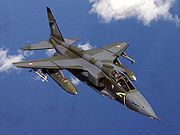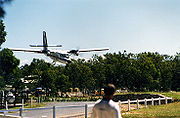Royal Rwizikuran Armed Forces
This article is incomplete because it is pending further input from participants, or it is a work-in-progress by one author. Please comment on this article's talk page to share your input, comments and questions. Note: To contribute to this article, you may need to seek help from the author(s) of this page. |
| Royal Rwizikuran Armed Forces | |
|---|---|
| Mauto emaMambo eRwizikuru | |
| Founded | 2 December 1946 |
| Current form | 2 December 1964 |
| Service branches | Royal Rwizikuran Army Royal Rwizikuran Navy Royal Rwizikuran Air Force |
| Headquarters | Guta raMambo |
| Leadership | |
| Chief of the Commonwealth Armed Forces | Mambo Munashe Ngonidzashe |
| Minister of Defence | Christopher Girard |
| Chief of Staff | Bernard Mac Carthaigh |
| Personnel | |
| Military age | 21 |
| Active personnel | 378,068 |
| Reserve personnel | 189,034 |
| Expenditure | |
| Budget | $1.481 billion |
| Percent of GDP | 5.5% (2019) |
| Industry | |
| Domestic suppliers | TBD |
| Foreign suppliers | TBD |
The Royal Rwizikuran Armed Forces (weRwizi: Mauto emaMambo eRwizikuru) is the armed forces of the Kingdom of Rwizikuru. Initially established in 1946 as the Rwizikuran Armed Forces (weRwizi: Mauto Ehondo eRwizikuru), after the institution of the Basic Law which established the Rwizikuran monarchy in 1964, it adopted its current name and form.
Throughout its history, it fought three wars: the Mabifian-Rwizikuran War in 1968 and 1969, the Garamburan War of Independence in 1969, and the Nativity War from 1974 to 1976, all three of which ended in Rwizikuran defeats.
History
Establishment and early years
While the Royal Rwizikuran Armed Forces have their origins in the colonial militia of the colony of Riziland, after Estmere granted independence to Rwizikuru on 2 December, 1946, the colonial militia became the Rwizikuran Armed Forces, with the first commander-in-chief being the first Rwizikuran President, Samhuri Ngonidzashe, with all equipment previously owned by the colonial militia being inherited by the Rwizikuran Armed Forces.
During the Republic, the Armed Forces served primarily as a defensive military force within Rwizikuru, and frequently dealt with insurgencies in the Yekumavirira region (today situated in Mabifia). (TBC)
Wars and stagnation
Modernization and contemporary era
Ranks and structure
Ranks
Due to the history of Rwizikuru, the Royal Rwizikuran Armed Forces have inherited the rank system used in Estmere at the time that the colony of Riziland gained its independence in 1946.
(TBC)
Structure
The Royal Rwizikuran Armed Forces is divided into three branches: the Royal Rwizikuran Army, the Royal Rwizikuran Air Force, and the Royal Rwizikuran Navy. As of 2011, of the 378,068 active duty soldiers in the Royal Rwizikuran Armed Forces, 283,552 people are part of the Royal Rwizikuran Army, 70,370 are part of the Navy, and 24,146 are part of the Air Force.
Equipment
Army
| Class | Image | Type | Number | Notes | |
|---|---|---|---|---|---|
| Vehicles | |||||
| TBD |  |
Armored car | 70 | Produced in Gaullica | |
| B200 BIFV |  |
Armored personnel carrier | 80 | Produced in Baekjeong | |
| Land Rover Defender |  |
Light utility vehicle | 200 | Produced in Baekjeong | |
| B9 TBD |  |
Self-propelled artillery | 30 | Produced in Baekjeong | |
| Small arms | |||||
| TBD |  |
Assault rifle | 75,000 | Produced in Baekjeong | |
| TBD | Battle rifle | 30,000 | Produced in TBD | ||
| TBD |  |
General-purpose machine gun | 180 | Produced in Baekjeong | |
| TBD |  |
General-purpose machine gun | 20 | Produced in Soravia, being phased out and replaced with the TBD | |
| TBD |  |
Pistol | 45,000 | Produced in Baekjeong | |
| TBD |  |
Submachine gun | 9,000 | Produced in Baekjeong | |




















